
Khichan Bird Sanctuary is located at a distace of 171 kms from Jaisalmer city in the village of Khichan. This natural sanctuary serves as home to three types of birds called Kurjan, Karkara and Kunch that migrate from South West Europe, Black Sea region, Poland, Ukraine, Kazakhstan, North and South Africa and Mongolia. These birds can be seen in large numbers at this bird sanctuary between October and March as they migrate to India during this time to avoid the cold winters of Europe.
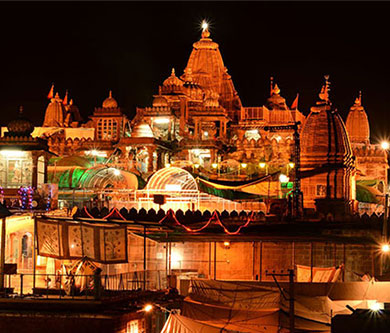
The Ossian Sachiya Mata temple near Jodhpur was originally built in the 8th century. However, the temple complex that now stands dates back to the 12th century. The Sachiya Mata Osiyan Temple in Rajasthan is dedicated to Sachi Mata. Sachi Mata, also known as Indrani, was the consort of the rain-god Indra. According to the legend, Indra married her for her voluptuousness. The main shrine, along with the other two temples - the Chandi Ka Mandir and the Amba Mata Mandir, was constructed around circa 1178.

The camel safari, India welcomes you to this land of camels, desert, palaces, folklores, mysteries and charms. “Camel” also known as the 'ship of the desert' the camel is the most popular of all animals in the desert. A camel safari allows the visitor a glimpse of the simplistic villages of Rajasthan and exposes the tourist to the rustic lifestyle of the desert people. The camel safari routes traverse through the Osian desert sand dunes taking the tourist the ancient havelis, temples and abandoned palaces.
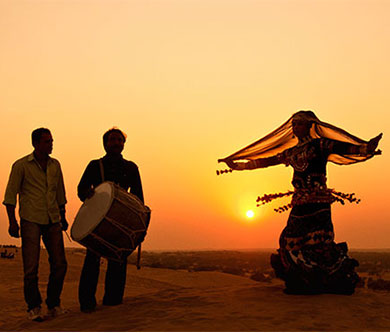
Highly cultivated classical music and dance with its own distinct style is part of the cultural tradition of Rajasthan. The music is uncomplicated and songs depict day-to-day relationships and chores, more often focused around fetching water from wells or ponds. The Ghoomar dance from Udaipur and Kalbeliya dance of Jaisalmer have gained international recognition. Folk music is a vital part of Rajasthani culture.olk songs are commonly ballads which relate heroic deeds and love stories.

The impregnable Mehrangarh Fort, which rises above the city, is one of the largest forts in India. As impressive as it is, as a well preserved heritage structure, there's so much more to discover inside. One of the highlights is the museum, which houses an outstanding collection of fine and applied arts from the Mughal period of Indian history. It even has the only professional museum shop in India.Inside its boundaries there are several palaces known for their intricate carvings and expansive courtyards.
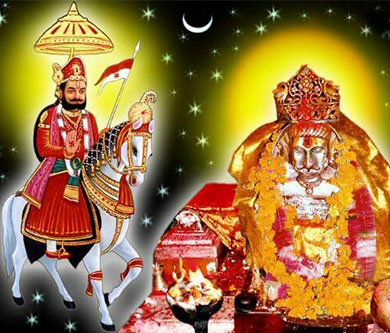
Baba Ramdevji is a folk-deity of Rajasthan in India. He was a saint of the fourteenth century who devoted his life to the upliftment of the downtrodden. Ramdevji was a Tanwar Rajput. While Hindus regard him as an incarnation of Lord Krishna, Muslims venerate him as Ramshah Pir. He is said to have had miraculous powers, and his fame reached far and wide. Baba Ramdevji believed in the equality of all human beings, be they high or low, rich or poor.It is situated 12 kms from Pokhran on Jodhpur to Jaisalmer road.
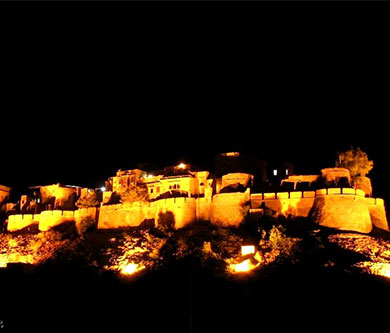
Known as SONAR QUILA, rising from the sand, the mega structure merges with the golden hues of the desert ambience and the setting suns in its most colourful shades gives it a fairy tale look. It’s simply a magic, the bastions envelops a whole townships that consist of palace complex various security sources and the havelis of rich merchants carved with an incredibly light touch, several temples.
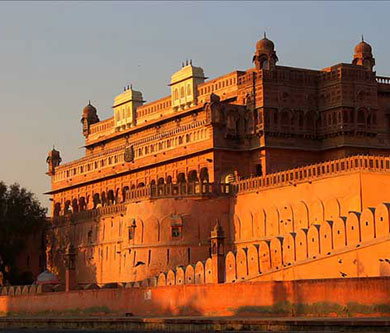
This fort was built by Raja Rai Singhji, the sixth ruler of Bikaner, who ruled form 1571 to 1612 AD. Raja Rai Singhji could Marshal the revenues of a Kingdom increased by the conquest of half Marwar and grant of half Gujrat and made use of ample funds from Jodhpur and Western Deccan for the construction of this fort. A contemporary of Mughal Emperor Akbar and Emperor Jehangir, he held a very high rank in Junagarh Fort, Bikaner the Imperial court.
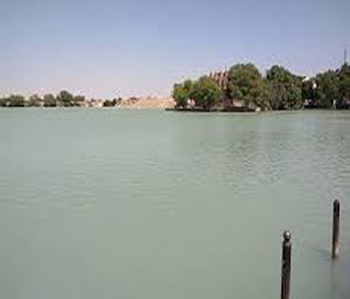
Kolayat is an historical centre of pilgrimage where the Vedic sage, Kapila is believed by some to have shed his body under a Peepul tree. Kolayat has a number of marble temples, sandstone pavilions and 52 ghats (bathing places) built around a large artificial lake.A temple dedicated to Kapila is the venue for an annual fair held in the month of Kartik. During full moon of this month thousands of devotees of the Sankhya philosophy gather to take a dip in Kapil Sarovar.